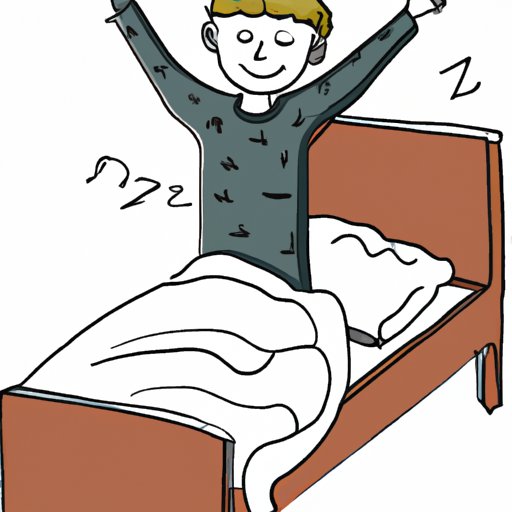Introduction
Getting your child to sleep in their own bed can be a daunting task. Whether they are just learning to sleep in their own bed or have been struggling with it for some time now, there are steps you can take to make the transition easier and more successful. In this article, we will explore how to get kids to sleep in their own bed by establishing a bedtime routine, making the bedroom comfortable, creating a sleep-inducing environment, offering reassurance, and reinforcing positive behavior.
Establish a Bedtime Routine
Creating a consistent bedtime routine is one of the most important steps you can take to help your child learn to sleep in their own bed. A routine provides structure and predictability, which can help ease anxiety and promote better sleep. It also helps signal to your child that it is time for sleep and prepares them for rest.
To create an effective bedtime routine, start by picking a consistent bedtime and wake-up time, even on weekends and holidays. Then, work backward from there and pick activities that will lead up to bedtime. These could include taking a bath, brushing teeth, reading a book, listening to calming music, or doing a short meditation. Make sure to give your child plenty of time to wind down before putting them in bed.
Make the Bedroom Comfortable
Making the bedroom comfortable is another key factor in helping your child sleep in their own bed. The right environment can help relax your child and make them feel safe and secure. Consider adding elements such as soft lighting, cozy blankets, and plush pillows to create a soothing atmosphere.
You can also add special touches like their favorite stuffed animal or blanket to make the room even more inviting. If your child is old enough, let them help choose decorations and other items for the room so they can personalize it and make it their own.
Create a Sleep-Inducing Environment
Another way to encourage your child to stay in their own bed is to create a sleep-inducing environment. White noise machines, weighted blankets, and essential oils can all help provide a calming atmosphere and promote relaxation. You can also experiment with different sounds or scents to find what works best for your child.
White noise machines can be especially helpful for children who are sensitive to sound. They produce a low hum that can mask background noises and help your child fall asleep more easily. Weighted blankets can provide deep pressure stimulation, which has been shown to reduce stress and promote better sleep. And essential oils can be used to create a calming atmosphere and induce relaxation.
Offer Reassurance
For children who are afraid of sleeping in their own bed, it is important to offer reassurance and comfort. Let your child know that you are there for them and that it is okay to be scared. Talk to them about their fears and provide alternatives if they are not ready to sleep alone yet.
You can also provide comforting items such as a nightlight, a security blanket, or a stuffed animal that they can keep in their bed. Additionally, consider setting up a video monitor so they can see you in the other room. This can help ease their fears and provide a sense of security.
Reinforce Positive Behavior
Once your child starts sleeping in their own bed, it is important to reinforce positive behavior. Praise them for their efforts and reward them for continued progress. This will help build confidence and motivate them to continue working towards their goal.
You can also use incentives to motivate your child. Offer rewards for staying in their own bed, such as extra screen time or a special treat. This can help encourage your child to stay in their bed and reinforce the positive behavior.
Conclusion
Getting your child to sleep in their own bed can be a challenge, but it doesn’t have to be. By establishing a bedtime routine, making the bedroom comfortable, creating a sleep-inducing environment, offering reassurance, and reinforcing positive behavior, you can help your child learn to sleep in their own bed. With patience and consistency, you can help your child develop healthy sleep habits and get a good night’s rest.


